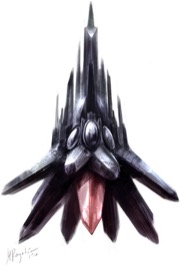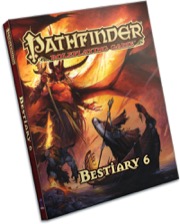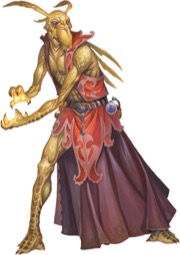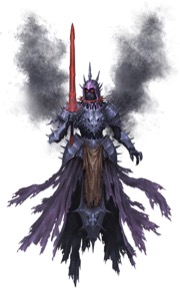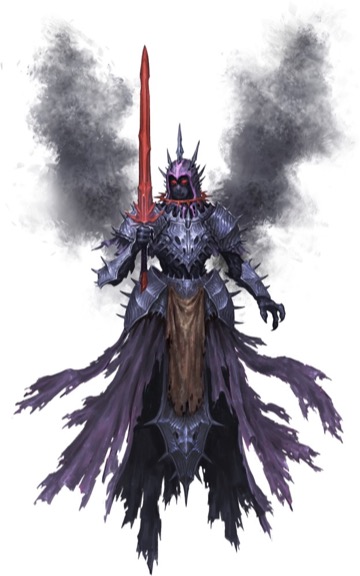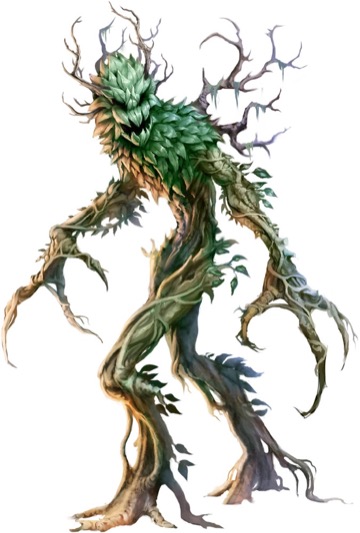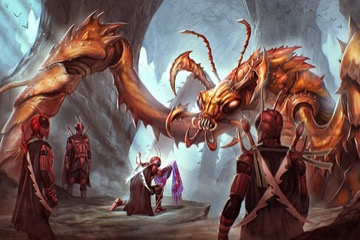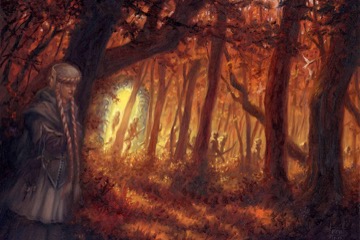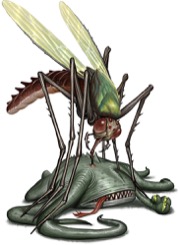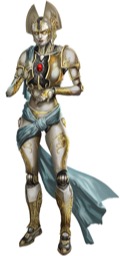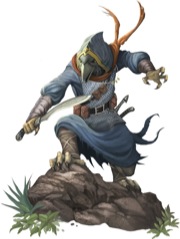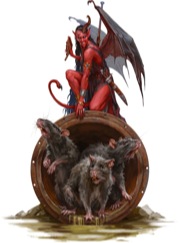This month marks the conclusion of the Ironfang Invasion, and even as I type, issues of Pathfinder Adventure Path #120: Vault of the Onyx Citadel are being furiously packaged and shipped by our warehouse raptors. Some of you may already have them in your dice-stained hands. We finally get to see what makes Azaersi tick, and what sort of danger her sly inner circle truly present. Your heros will (hopefully) slay the "witch worm" Zanathura (again) as well as the Ironfang Commanders, Kraelos and Azlowe as they explore a pocket of the Plane of Earth originally mastered by the ancient xiomorn, and left abandoned with its mysteries and powerful artifacts intact. Hopefully you all have as much fun killing everything as the authors and I had breathing life into them.
Developing this AP was a hell of a journey that helped my skills travel almost as far as your PCs will. I learned that sometimes you need to make a giant mess on an office wall with sticky notes before you can make a complex system work, and that greater barghests are a lot bigger than I realized. I also learned that my fellow developer, Amanda Hamon Kuntz is a sick little monkey. Traditionally, the AP developer uses this blog to mention their favorite thing from the six volumes, but my authors did some amazing work all around, and I don't think I have a favorite. There are too many weird characters and bizarre encounters, and my brain is too leaky from years of drinking and traumatic head injury to really have a favorite thing for more than five minutes. I will say that I'm pretty happy with the art; we gave the art team some really strange requests—from balding bugbears to morlock matriarchs—and their artists delivered.
I also learned in this six-month process that I am not—counter to what the internet tells me—infallible. I have in fact fallibled. I fallibled so hard, you guys. Sometimes it was little things, like not remembering when I swapped a character's name out or whether they were called "onyx towers" or "obsidian towers." Thank the dark gods for editors or else it would have been a lot worse. But there's one glaring omission: The onyx key itself. I never included a statblock for the macguffin that powers the entire campaign! In early volumes, I decided that since it largely acted as a plot device that the PCs wouldn't interact with, we could leave off a statblock until later volumes. But by the time we reached said later volumes, I knew that surely I'd included the statblock in the first adventure (it was would be asinine not to, I think you'll agree).
Now that your players are ready to kick General Azaersi's butt and take her stuff, here at last is the statblock for the onyx key:
The Onyx Key
This jagged growth of crystal pulses with warm pink and range hues. Carvings of spires and crenellated walls transform the top into a model fortress or palace. Nine uncarved spikes grow from the citadel's base—eight jet-black and the ninth a brilliant red.
Onyx Key Major Artifact
Slot none; CL 20th; Weight 8 lbs
Aura strong conjurationThough deceptively small, the onyx key is a powerful artifact that serves as the focus and control mechanism for the vast dimensional energies collected by the xiomorn facility called the Onyx Citadel. The citadel itself maintains a complex network of extradimensional tunnels known as the Stone Roads—once used by the xiomorns to travel across the Plane of Earth—and allows this network to bridge into other planes, granting its user the power to move resources or entire armies. Eight shards of black crystal grow from the onyx key's base, and may be broken off as a standard action. If an onyx shard is plunged into natural earth or stone as a full-round action, it begins rumbling and grows into a thirty-foot spire of translucent black stone with an archway in its base. The tower's archways can be commanded to open an extradimensional tunnel to the archway of any other onyx tower no the same plane. The tower requires a full thirty seconds to grow. A Stone Road opened between two towers is typically a 100-foot stone tunnel, but as with many elements of xiomorn magic this is far from certain, and gates may occasionally run far longer, with smaller side passageways leading off into the unknown.
A crystalline matrix—a network of circles and imbedded stones—embedded in each spire may be manipulated to open and close the tower's connection to other towers, destroying it, or restructure the tower's design. Linking to another tower requires a successful DC 25 Knowledge (geography) check, reshaping the tower requires a successful Knowledge (engineering) or Use Magic Device skill check, with the DC ranging from 20 for simple additions, such as stairways or a single room—to 35 or higher for sophisticated layouts or defenses. Open or closing the tower's connection to the Stone Roads takes a standard action, while inputting changes requires one minute of work and 1d4 weeks for the tower to slowly make the appropriate alterations to itself. Destroying the tower requires a successful DC 35 Knowledge (engineering) or Use Magic Device check and a full 36 rounds to activate. A tower's footprint cannot exceed 120 feet on a side, and cannot grow taller than 80 feet.
In addition to the nine black shards, a single sardonyx shard grows from the onyx key's base. This shard cannot be used to grow a tower, but instead may be installed in an existing tower to augment its power, allowing it to open a Stone Road to the Onyx Citadel itself, or connect to onyx towers on other planes.
Whoever possesses the onyx key itself may mentally destroy an existing onyx tower as a full-round action, but cannot destroy a shard that hasn't yet been transformed into a tower, nor the sardonyx shard if it hasn't been installed in a tower. Once a tower is destroyed, its corresponding onyx shard regrows from the onyx key over the next month.
Destruction
The eight onyx shards of the onyx key must be planted in the eight ends of the Stone Road, stretching itself magic thin, while the onyx key itself is cast into the Storm of Fangs on the Plane of Air.
History
While the Stone Road predates the onyx key—the Onyx Citadel and other hubs of xiomorn science already capable to opening gates to this network—the artifact gave its ancient creators the gift of mobility and the power to leap the dimensional barrier with ease, expanding their experimentation to new worlds. As the xiomorn withdrew from Golarion, they left the onyx key, alongside many other treasures, in a sacred stronghold in the Darklands layer of Orv.
The artifact entered the modern history of Golarion when it was discovered by the dwarven explorer Kraggodan, who followed strange whispers in the earth to the vast treasures the xiomorn left behind. Using the onyx towers as a series of ever-advancing strongholds, Kraggodan and his clan completed their Quest for Sky swiftly and with minimum casualties—most notable Kraggodan himself, who died defending his people from the orcish hordes—and the clan named the city they founded in honor of their late savior. Once settled in, the dwarves began to experiment with the onyx key in hopes of understanding its powerful magic, and instead opened a Stone Road to the Vault of the Onyx Citadel, allowing all manner of outsiders to flood through and devastate their population. Wary of a similar tragic mistake, they sealed the artifact in a sacred vault dedicated to their people's history, safely locked away from curious hands.
And there the onyx key stayed for thousands of years, largely forgotten by all but a few, until it was stolen by the hobgoblin warlord Azaersi, beginning the events of the Ironfang Invasion.
Crystal Frasier
Developer







